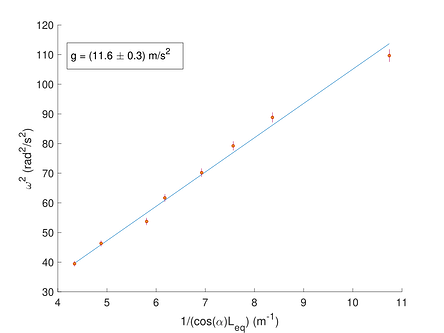Familiarizing with the dynamic equilibrium in rotational motion using the conical pendulum
Description
In this investigation, we will identify the free body diagram of a horizontally whirling object and see how it lifts as its speed goes up. The lift apparently de es the downward pull of gravity but we will see how a delicate balance of forces allows the object to swirl at a certain lift angle. As the speed of the object changes, the forces adapt and preserve the delicate balance. Eventually, this apparatus becomes a really nice demonstration of the interplay of geometry, vectors, forces, and equilibrium. This experiment recreates the mental problem in Paul Nahin’s beautiful book, “In Praise of Simple Physics” and is one of the author’s methods to determine the value of g.
Overview
• Study dynamic equilibrium, angular velocity, centripetal forces, and acceleration due to gravity.
• Observing the effect of angular velocity on geometric parameters of conical motion.
• Investigating discrepancies between theoretical predictions and experimental observations.
• Calculating uncertainties from the measurements taken from a video.
• Using video for observing a physical phenomenon.
How does it work?
This experiment uses a conical pendulum to familiarize the experimenter with dynamic equilibrium in rotational motion. In this investigation, we identify the free body diagram of a horizontally whirling object and see how the object lifts as its speed goes up. The lift apparently defies the downward pull of gravity but we see how an angular balance of forces allows the object to swirl at a certain lift angle. As the speed of the object changes, the forces adapt and preserve the delicate balance.
In this experiment, the angular speed of a pair of spheres moving in a horizontal plane is controlled by a stepper motor. It is also monitored in real-time and displayed on a computer screen. We then record this motion using a video camera and use image processing software to find the geometric parameters of the system. This information is used to make quantitative assessments. This experiment is a fine example of how video analysis can help understand the confusing nature of rotational motion. The gravitational acceleration is calculated with the help of obtained data and is displayed.
Parts included
• Stepper motor and housing
• Power source
• Conical pendulum
Parts not Included:
• Camera
• Tripod stand
• DC lights
• PC
>You can get the PDF version of the brochure by clicking on this link.

